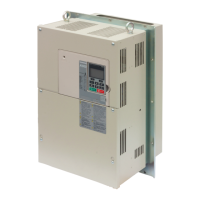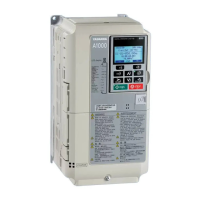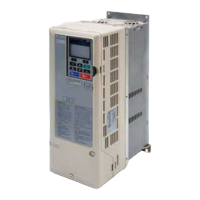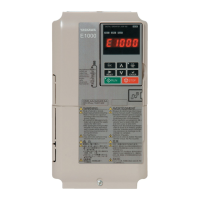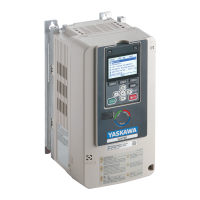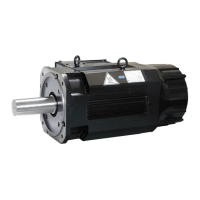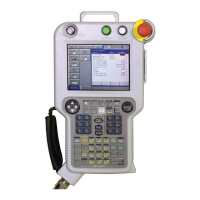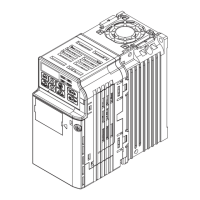5.3 C: Tuning
YASKAWA ELECTRIC SIEP C710616 27G YASKAWA AC Drive A1000 Technical Manual 191
5. Run the motor at maximum speed and decrease ASR integral time 1 (C5-02) as much as possible without
oscillations.
6. If higher speed precision and faster response during acceleration or deceleration is required, enable integral
control during accel/decel by setting parameter C5-12 to 1. Change the speed and make sure no over/
undershoot occurs.
Adjusting the ASR Parameters in CLV, AOLV/PM, and CLV/PM
In CLV, AOLV/PM, and CLV/PM the drive is pre-set to use ASR settings C5-01/02 over the whole speed range. If
required by the application, a second set of ASR parameters (C5-03/04) can be automatically activated depending on the
motor speed or by using a digital input. Also refer to C5-01, C5-03/C5-02, C5-04: ASR Proportional
Gain 1, 2 / ASR
Integral Time 1, 2 on page 192.
Perform the following steps for adjusting
ASR parameters:
1.
Run the motor at zero speed and increase the ASR gain (C5-01) as much as possible without oscillation.
2. Run the motor at zero speed and decrease the ASR integral time (C5-02) as much as possible without
oscillation.
3. Run at the normal operating speed. Check for over/undershoot when changing speed and for any oscillation.
4. Should problems occur in step 3, increase the integral time and reduce the gain.
Alternatively, use different ASR settings for high and low speed. Set the values from step 1 and 2 to parameters
C5-03 and C5-04, then set an ASR switching frequency in parameter C5-07. Run the motor at a speed higher
than C5-07 and repeat step 3 while adjusting C5-01 and C5-02.
Solving Problems During ASR Setup
Use Table 5.15 when making adjustments to ASR. Though the parameters listed below are for motor 1, the same changes
can be made to the corresponding motor 2 pa
rameters when running a second motor.
Table 5.15 ASR Setup Problems and Corrective Actions
Problem Possible Solutions
Slow response to speed changes or speed
deviation lasts for too long
• Increase the ASR gain.
• Decrease the integral time.
Overshoot or undershoot at the end of
acceleration or deceleration
• Decrease the ASR gain.
• Increase the integral time.
Vibration and oscillation occur at constant
speed
• Decrease the ASR gain.
• Increase the integral time.
• Increase the ASR delay time (C5-06).
The motor slip is not fully compensated when
running in V/f Control with PG
• Check the pulse number set to F1-01 and the gear ratio in F1-12 and F1-13.
• Make sure the pulse signal from the encoder is set up properly.
• Check monitor U6-04 and check if the ASR is working at its output limit (setting of
C5-05). If so, increase C5-05.
Integral operation is enabled in V/f Control with
PG (C5-15 = 1) and over/undershoot occurs
when changing speed.
–
• Decrease the ASR gain.
• Increase the integral time.
• If the problem persists, reduce the ASR output limit set in C5-05.
Oscillation at low speed and response is too
slow at high speed (or vice versa)
–
• V/f control: Use C5-01/02 and C5-03/04 to set
up different ASR settings at minimum
and maximum speed.
• CLV, AOLV/PM, CLV/PM: Use C5-01, C5-02 and C5-03, C5-04 to define optimal
ASR
settings for high and low speed. Use C5-07 to define a switching frequency.
Time
Speed reference
Motor Speed
Time
Speed reference
Motor Speed
Time
Speed reference
Motor Speed
Time
Speed reference
Motor Speed

